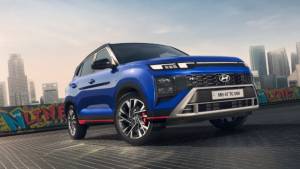Maruti Suzuki XA Alpha origins
The finished product is what's presented to you for evaluation. But how did it come about is a question that your average Joe isn't really interested in. The years, months and days spent in research and in designing, which eventually produces the final product, remains but a footnote. Which is why we decided to get behind the scenes and understand the arduous but exciting process of producing a concept car.
The XA Alpha from the Maruti Suzuki stable was one of the most exciting concepts to be shown at the 11th edition of the Delhi Auto Expo. It was a joint effort by the R&D departments of Suzuki Motor Corp and Maruti Suzuki India. But the Japanese role was more in terms of guidance with the actual design coming from the Indian drawing board. And what's impressive is that this concept went from the research stage to its deserved spotlight at the Maruti Suzuki stall at the Expo in just nine months.
It started around March 15, 2011 when the whole idea of a concept vehicle for the Expo was mooted. It began with a three month research activity across ten cities. The main target audience was the Indian youth and this research came up with the finding that the young guns preferred an SUV as their vehicle of choice. Requirements like trendy, experimental, rugged while also being compact, refined with city and off-road usage capability came to the fore. The premise of the vehicle was rugged living, 'wild urban' as Maruti calls it and they felt that nothing better represented this theme than the Indian wrestling. Kushti is as Indian as it gets and that formed the blue print. Using all of these findings the six-member team â" Jagjit Singh Rana (Head designer), Anupamsingh Tomer, Ankit Prashar, Rekha Meena, Ajay Kota and Shailendra Petwal - at Maruti's advanced design department started putting the pieces together.
Next up was the sketching stage. This was a two-month process with each member submitting their sketches. There were almost 20-30 sketches being prepared by each member, everyday, as the team went about deciding the direction in which they wanted the final design to proceed. The 'go wild' liberty given by the big bosses gave the team a lot of freedom especially considering that since it was a concept there were no engineering restrictions â" a designer's dream. It resulted in 16 options being given by the six designers. It was Tomer's design which got selected.
After sketching the next stage was modelling. This involved creating the final design using the computer and also making of a scaled as well as a full size model of the final vehicle. There were many iterations and the team added and removed bits, in consultation with their Japanese counterparts to fine tune and finalise the design. This took two months.
After the final design was ready, the next step was the actual manufacturing of the concept. After looking at multiple options, they finally decided on setting up base in Shanghai to produce this concept SUV.
During the whole process, the main focus was on creating a compact SUV that has a clean character, is contemporary â" straight lines without too much drama. The influence of wrestling saw interlocking, like the interlocked wrestlers, being the main theme. Cues were taken from existing products like the Swift and the Suzuki Jimny â" from which was derived the five-block design of the front grille. The colour, lava red, was also arrived at after considering almost 25 shades of each colour with orange also being considered. The red representing the blood running through the veins of the Indian youth and also reflecting their passion, power and confidence. The candy finish was also a challenge since it's not something that can be achieved on big surfaces. In keeping with the concept ideology, there are many interesting features like cameras instead of rear view mirrors, LED headlamps and door handles which have a card as well as button access.
The actual making of the vehicle at the Shanghai studio was a five-month process which culminated in the flash bulb frenzy at the Expo. The XA Alpha, where X stands for crossover, A stands for the customer who's entering the SUV segment and Alpha represents the youth quotient, proved to be quite a crowd puller at the Expo. "We are the youngest team that has created a concept car. And we did it with panache," says Rana. But of course, as Rana says with a laugh, they did get a 'kitna deti hai' from one of the visitors to the stall. Some things never change.
Turn to the next page to check the excerpts from the conversation between OVERDRIVE and the GM of product planning and design at Maruti Suzuki.
In-conversation with Tarun Agarwal GM product planning and design
What was the thought process behind the creation of the XA Alpha?
The A-star concept was done around four years ago and then the R3 in 2010 â" now this. It's becoming more of a pattern and we wanted to continue that. That's why this time we were looking for a theme and considering our line-up, where we are and our interest in the aspirations of the market - everywhere, this fit in very well. If you look at what has come in the Expo it is evident. Most car makers were thinking similarly, serendipity or whatever you would like to call it. It's the beginning of the SUV for us. If you look at the market, in cars we are there primarily, MPV and SUV put together the Ertiga will be there. And then there are vans where we have been traditionally present. So this is an area where there is a bit of a vacuum.
The XA Alpha has a very contemporary look to it. Not too flashy as concepts go.
Concept cars they fall into three broad categories. First is where the automaker is very clear in his mind that he wants to get into production. An advanced version of the production vehicle comes as a concept. The second is you are exploring a design language and based on that exploration you may decide whether to get into that production or not. And the third is that you are truly exploring something which is absolutely conceptual. Which in all likelihood will not see the light of the day in 8-10 years or beyond. Ours would be something which is typically in the middle. So here I am trying to make something which is fairly conceptish but at the same time if we get the correct response from the market and if everything else also fits into place internally we will look at actually making something.
At what stage is automotive design in India? And where is it headed?
Design cannot be looked at independently from engineering in India. Design happens because somebody needs to create products in India. So there are Indian manufacturers who have been developing cars and doing good work in India. More and more automakers who set up base and want to develop cars in India need design support. There are studios by Maruti Suzuki, Tata, Mahindra, GM and Renault. Hyundai is setting one up. The last 7-8 years have seen a lot of action in the design scene in India. I am very hopeful that design and engineering put together, automotive development is really going to happen in India. Especially for certain categories, like the small car for which India is a hub, things will happen long term in India.














